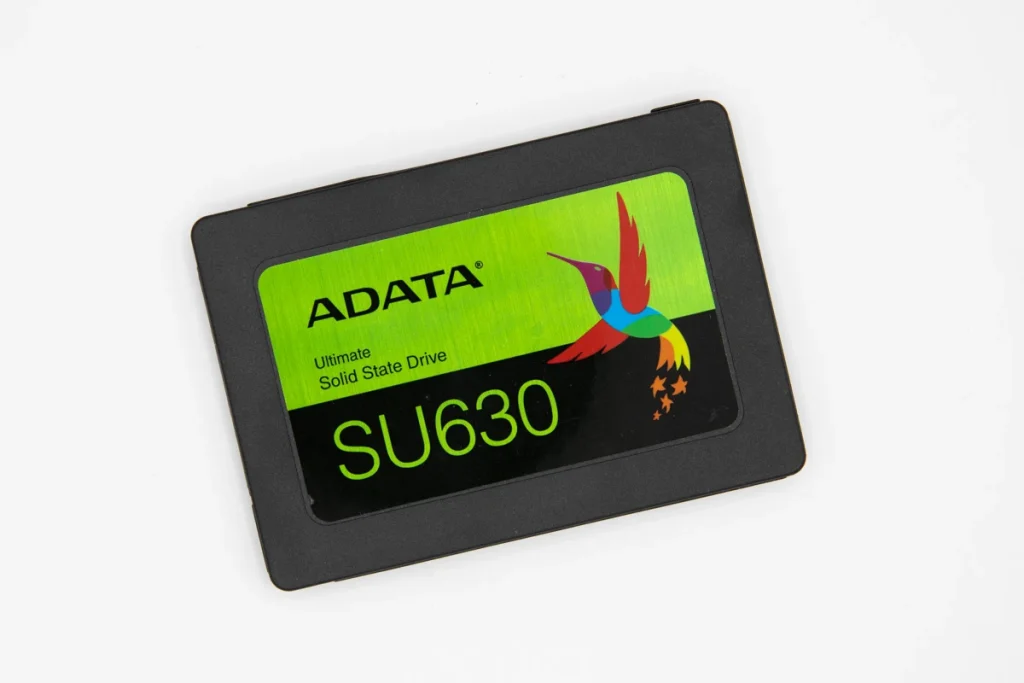Solid State Drives (SSDs) have garnered increasing popularity in recent decades due to their capacity for high-speed data transfer and storage capabilities. In comparison to conventional Hard Disk Drives (HDDs), Solid State Drives (SSDs) offer swifter read/write speeds, reduced power consumption, and enhanced durability. The present article shall delve into the essence of SSDs, elucidating their operational mechanisms and exploring the various types of SSD drives available in the market.
Definition of SSD
An SSD represents a data storage device that utilises flash memory to persistently store files. Unlike traditional hard disk drives that rely on spinning disks for data storage, SSDs employ NAND-based flash memory to retain data on a non-volatile chip. Consequently, even when power is disconnected, the data remains preserved on the chip.
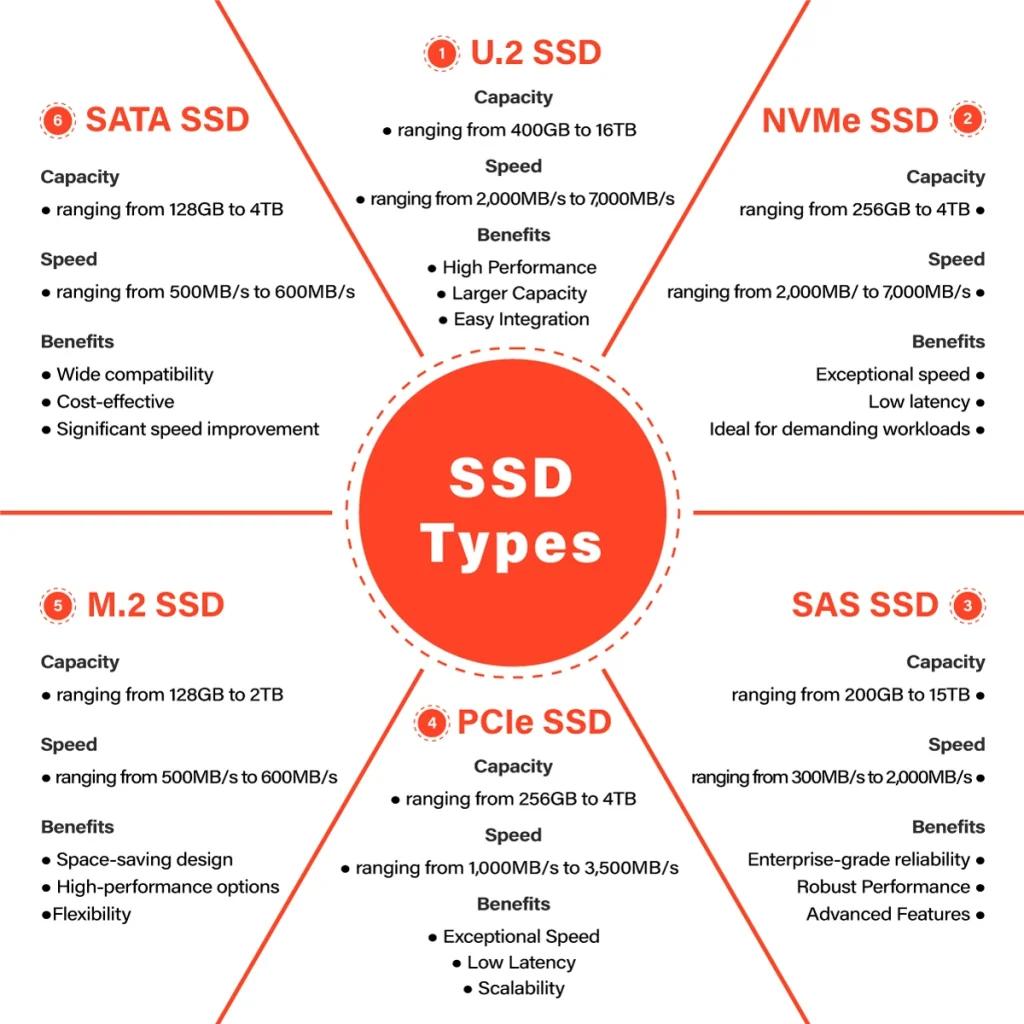
How Does an SSD Operate?
The functioning of an SSD involves the storage of data on a NAND-based flash memory chip. This data is stored in an arrangement of cells, with each cell signifying a bit. During the data writing process, the bits are programmed into the cells.
When it comes to data retrieval, the SSD assesses the voltage level of each cell to determine the corresponding bit value.
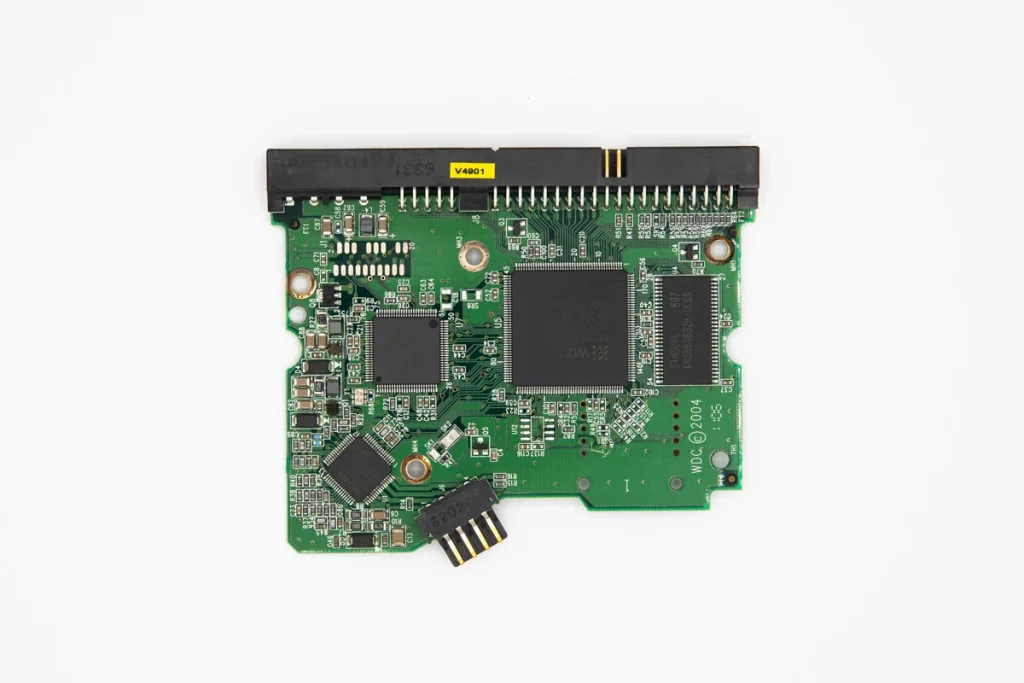
The absence of any moving components in an SSD enables swift data access and transfer, far surpassing the capabilities of conventional hard drives.
Types of SSD Drives
A plethora of SSDs with distinct features, performance attributes, and pricing are readily accessible in the data storage market. Presented below are some of the most prevalent types of SSD drives:
SATA SSD
Among the array of SSDs, SATA SSDs emerge as the most prevalent variant available today. These drives utilise the Serial ATA (SATA) interface to establish connectivity with a computer’s motherboard. Exhibiting commendable read and write speeds, SATA drives prove ideal for routine computing activities such as web browsing, document editing, and video streaming. Furthermore, they are available in a diverse range of capacities, spanning from 128GB to 4TB.
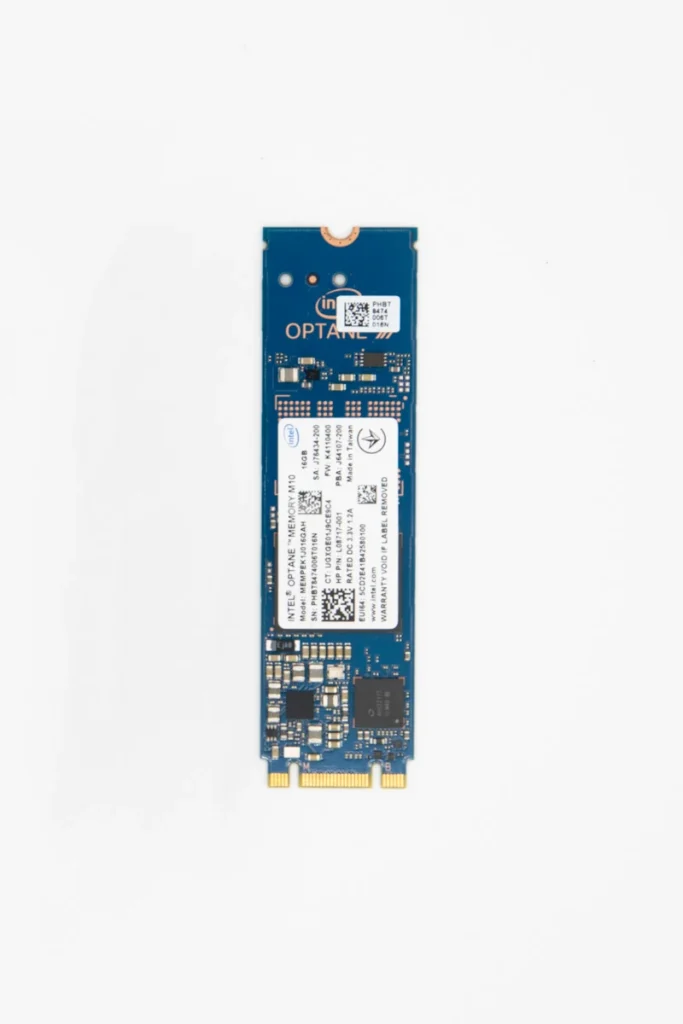
NVMe SSD
The NVMe (Non-Volatile Memory Express) SSDs represent the swiftest category of SSDs obtainable in today’s market. Employing the PCIe (Peripheral Component Interconnect Express) interface to establish a connection with a computer’s motherboard, NVMe SSDs deliver superior read/write speeds compared to SATA SSDs.
These SSDs prove eminently suitable for high-end computing tasks, including gaming, video editing, and data processing. Moreover, they are accessible in an assortment of capacities, ranging from 256GB to 4TB.
M.2 SSD
M.2 SSDs comprise compact form factor SSDs that rely on the PCIe interface to interface with a computer’s motherboard. They are ingeniously designed for direct installation onto the motherboard, effectively conserving space and enhancing airflow within the computer case.
M.2 SSDs come in various dimensions, with 80mm length and 22mm width being the most common. Their aptness for employment in ultra-thin laptops and compact desktops, where space is at a premium, renders them particularly advantageous.
U.2 SSD
U.2 SSDs, being of enterprise-grade drive, employ the PCIe interface to connect with a computer’s motherboard. They are purpose-built for data centres and other high-end computing environments where the utmost performance and reliability are of paramount importance. U.2 SSDs offer commendable read and write speeds, along with advanced features such as power-loss protection and end-to-end data protection. These SSDs are available in a diverse range of capacities, spanning from 400GB to 16TB.
SAS SSD
SAS (Serial Attached SCSI) SSDs epitomise enterprise-grade solid-state drives that rely on the SAS interface for connectivity with a computer’s motherboard. Tailored for deployment in data centres and other esteemed computing environments where utmost performance and reliability are indispensable, SAS SSDs bear paramount significance.
These SSDs deliver remarkable read and write speeds alongside offering sophisticated attributes encompassing power-loss protection and end-to-end data safeguarding.
Moreover, they possess hot-swappable capabilities, facilitating their replacement while the system remains operational, thereby minimising downtime. SAS SSDs are offered in an array of capacities, spanning from 200GB to 15TB.
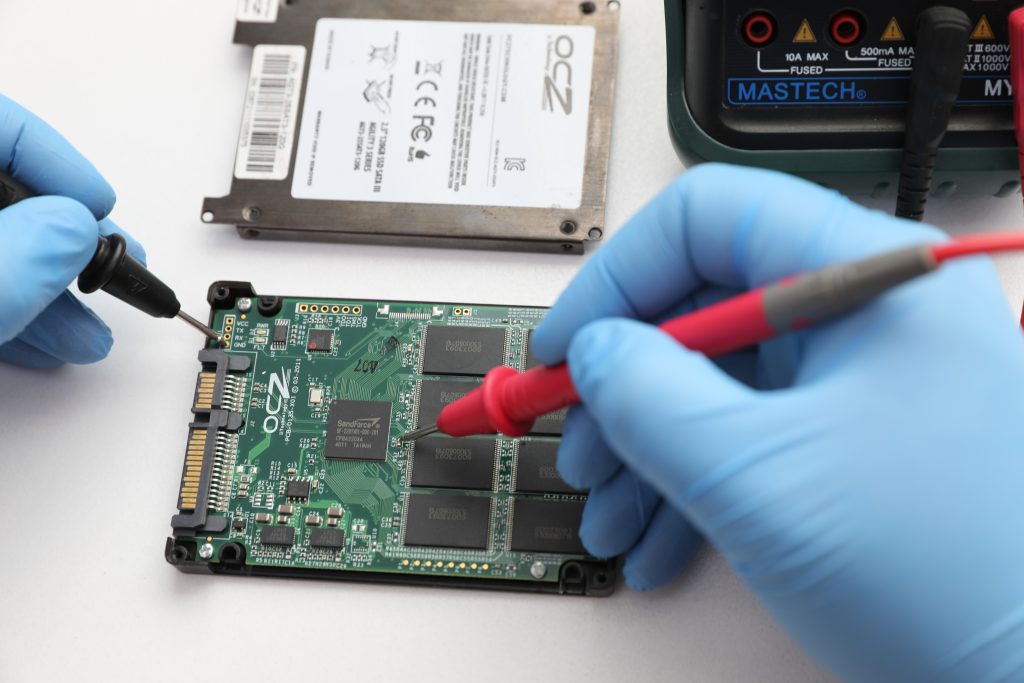
PCIe SSD
PCIe SSDs represent solid-state drives that establish connectivity with a computer’s motherboard through the PCIe interface. Exhibiting faster read and write speeds in comparison to SATA SSDs, they prove ideal for high-end computing tasks, including gaming, video editing, and data processing. PCIe SSDs are available in various capacities, ranging from 256GB to 4TB.
SSDs serve as an excellent choice for users seeking superior read and write speeds, lower power consumption, and heightened durability, surpassing the capabilities of conventional hard disk drives. Within the data storage market, a variety of SSD types are readily accessible, each characterised by its unique features, performance attributes, and price points.
During the SSD selection process, critical considerations encompass performance, capacity, and price, in conjunction with compatibility with the computer’s motherboard. All in all, SSDs represent a worthwhile investment for users seeking to elevate their computer’s performance and storage prowess.
Frequently Asked Questions
What are the available interfaces for SSDs?
The most prevalent interfaces for SSDs are SATA, PCIe, and NVMe.
What does SATA stand for?
SATA (Serial ATA) represents a widely utilised interface connecting storage devices, such as hard drives and SSDs, to a computer. It offers commendable performance and boasts compatibility with the majority of computers and motherboards.
What is the significance of PCIe?
PCIe (Peripheral Component Interconnect Express) stands as a high-speed interface primarily employed for connecting expansion cards, while it also finds use in SSDs. PCIe SSDs exhibit notably faster data transfer rates in comparison to SATA SSDs.
Which interface should I opt for when selecting my SSD?
The selection of interface hinges on your specific requirements and your computer’s capabilities. If your computer supports PCIe and NVMe, opting for NVMe SSDs is recommended to attain peak performance. Conversely, if your computer solely supports SATA, a SATA SSD would prove a fitting choice.
Should compatibility concerns be taken into account?
Certainly, compatibility holds significant importance. SATA SSDs are compatible with most computers and motherboards. PCIe SSDs necessitate a compatible PCIe slot, which may not be available on all systems. As for NVMe SSDs, they require both a compatible PCIe slot and NVMe support within the system’s BIOS.
"*" indicates required fields
